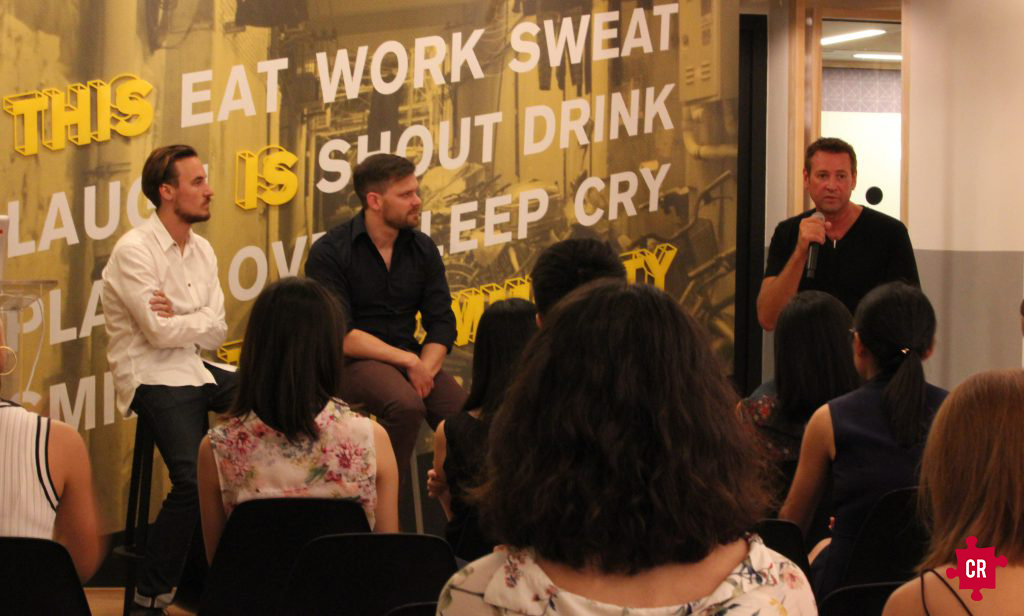Globally the future of work is changing. Millennial workers are entering the office, with widely differing expectations than the previous generations, more automated systems are cannibalizing jobs, and the shear nature of work spaces are changing with the proliferation of co-working and a far greater focus on collaboration.

At Collective, our most recent Beyond Business As Usual Forum focused on this topic. The discussion ranged from manufacturing labor and millennials to co-working space and human-centered design for high-end office space. Our speakers were William Morris and Chuli Duan from Collective Responsibility, David Barrass of Haworth, and Jason Marriott from WeWork.
Here are a number of key takeaways from our speakers.
The shift to ASEAN is mainly for low end manufacturing
Vietnam has become a strong base for electronics and textile manufacturers, which are also burgeoning in India, Bangladesh, and Ethiopia. However, with the exception of Vietnam most of this labor movement is from the lowest skilled, poorly paid workers. The availability of cheap labor in these countries is a major draw for companies given the high labor component to overall manufacturing cost in industries such as fast fashion. This is not a concern for China, while this used to form a vital part of their manufacturing framework, with the desired movement up the value chain they are jobs that China and Chinese workers no longer want.
Automation will come, but it will take time
In the short to medium, automation may have a lower impact than you think. Certain areas are already highly automated, such as the first two or three levels of manufacturing which involves repetitive processes requiring precision. However, if one looks at a textile factory’s floor, the process will probably not differ much from 80 years ago. Weaving operations are highly automated but the labor component within cut and sow operations remain. Additionally, for electronics, the assembly process is still very labor intensive. However, increased incorporation of automation is becoming increasingly viable as labor costs rise and automation decreases.
Look out for the Chinese millennial
“50% of millennials check their phone every 15 minutes. They literally cannot live without their phones.”
Millennials are becoming an increasingly prominent force in the consumption and labor market. They are mobilizing in big cities and are the most mobile connected generation to date. Millennials are deviating from the norms in both preferences and values when compared to preceding generations. Interestingly, driven by passion, money, and a need for independence, more of them would want to be an entrepreneur or work in a startup as opposed to state-owned government jobs, the previous go-to careers. These attitudinal changes also influence their habits and thus, suitable designs for their workspace is key. From surveying the millennial population, travelling for work is priority, individual offices were the top preference, open spaces second, and cubicles third.
Achieving “Wholeness” at work
Through collaborative design-thinking, Haworth has focused on striking a balance of cognitive, emotional, and physical parameters for each individual to achieve workspace “wholeness”. Within cognitive, spaces should look towards serving memories such as providing sticky notes to interact with the space, externalization which is the ability to access face-based conversations over coffee, and personal insulation preferences, including the ability to tune in and out of work. Emotional characteristics include authenticity or making the environment “feel right”. There is a greater emphasis on well-being through increased sensitivity to air and water safety in the workplace. Physical characteristics address anthropometrics, ambience, and movement, which range from the comfort of office appliances to the perfect temperature for a workspace.
Growing technology in workforce
“A key action for the future is how we translate data into something actionable and meaningful.”
In the modern era of technology and big data, there are many ways to interpret and use data but what is key is how it is applied. Wearables are one burgeoning field that will play a role in monitoring workers’ health and habits to observe how the environment impacts their work. In addition to this individuals are becoming more aware of the power of their data, its monetary value and how companies use it. As a result in certain situation they are more willing to share their data if it allows for personal benefit. The office space is a great example of where individuals value their experience and will be more willing to provide data to better their working life.
Corporates entering the co-working scene
In addressing the multitude of different attitudes and perspectives in the workforce, co-working spaces have been developed. They are more comfortable, sociable, and not as hard-edged. There’s a startup feel and they provide a sense of community for those working within the space. Emphasis is placed on openness both architecturally within businesses. Traditionally a place for entrepreneurs and start-ups, WeWork is now seeing the entry of corporate organisations into their space. As the attractiveness of start-up culture accelerates, embracement of such culture and spaces from large corporations is set to grow.
These six areas are just some in a host of how people and companies are looking to embrace employees and develop new approaches to work and the workplace. It is an exciting time with no right or wrong answer but increasingly customisation and employee centric design is winning over to the more traditional, more isolated working style.
The post Event Insight: The Future of Work appeared first on Collective Responsibility.